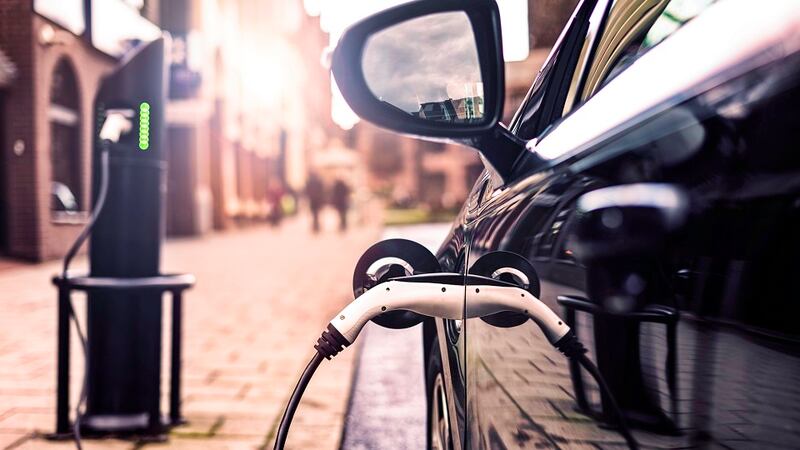“One of the things which is not heralded enough in Ireland is the level of progress that has been made to reduce carbon emissions from electricity generation,” says ESB’s head of corporate and regulatory affairs Peter O’Shea.
“By the end of 2020, almost 40 per cent of Ireland’s electricity will come from renewable sources such as wind, hydro and solar power. That is from almost a standing start at the turn of the millennium.”
This is quite an achievement by international standards. “While there may be criticisms which could be levelled at Ireland in relation to climate action, electricity has more than pulled its weight,” says O’Shea.
“Here in Ireland, we have the second highest penetration of wind power in Europe. Only Denmark has a higher level, but they have the advantage of being connected into the German and Scandinavian electricity networks, which helps them manage the level of variable sources on the system.”
Targets
That is only the beginning though. “The target for 2030 is 70 per cent of all electricity used in Ireland will be generated from renewable sources,” O’Shea adds. “Because of the variable nature of renewables – the wind does not always blow, for instance – this is a big technical challenge for the electricity network to accommodate. But the ambition for electricity as a catalyst for reducing carbon emissions has always been big, and this has helped to drive progress.”
He points out that electricity generation accounts for 20 per cent of Ireland’s carbon emissions while heat and transport together account for a further 40 per cent. “A simple strategy to address those emissions is to use clean, low-carbon electricity to heat our homes and to power transport and industry,” he adds. “As we continue to decarbonise electricity and move to electric heat and transport, electricity will move from being 20 per cent of the problem to around 60 per cent of the solution.”
There are immediate as well as longer-term benefits. “Even with current levels of carbon from electricity generation, an electric vehicle (EV) will produce between 40 and 50 per cent less carbon per kilometre than an internal combustion engine,” says O’Shea. “Similarly, heat pumps emit 60 per cent less carbon than an oil boiler and 40 per cent less than a gas boiler. As more renewables come on stream, the carbon savings from electric heating and transport will continue to increase."
Heat pumps

Heat pumps offer affordable and carbon efficient energy to householders.
“Heat pumps are ideal for new homes which are well insulated and the Government’s plan to phase out fossil fuel heating from new builds is welcome.” says O’Shea. The bigger challenge is in replacing heating systems in existing, poorly insulated, homes. “Nearly 700,000 Irish homes use oil fired systems and around 180,000 use solid fuel. As people take steps to increase the energy efficiency of their homes, they should also consider installing a heat pump to future proof the work they are carrying out.”
Electric vehicles

The Government has set a target of having up to one million EVs on the roads by 2030. “Electric vehicles at this scale will not only reduce carbon emissions from transport but will also increase the efficiency of the overall electricity system.” according to O’Shea. “EV typically charge overnight at times of low electricity demand and excess wind generation, so they have the potential to act as a virtual battery, storing electricity when the wind blows and releasing some of that energy back to the network at times when the wind is not blowing or the sun is not shining. This would potentially improve the energy system's ability to manage variability and help balance it as it moves towards full decarbonisation.
Making it all happen
Moving to a fully decarbonised electricity system will depend hugely on the ability of the electricity network to facilitate flows of electricity between millions of energy sources and devices, including wind farms, microgeneration, EVs, heat pumps and batteries.
“ESB Networks is continuing to innovate and invest in smart network technologies and infrastructure to enable the decarbonisation of electricity and support the future needs of customers and communities across Ireland," notes O'Shea.
To maximise the speed of development, and to understand both the technological and behavioural changes that are coming, ESB Networks’ is working directly with local communities in Dingle, Limerick and the Aran Islands to trial new technologies and examine how customers interact with them. Insights from these projects will inform national network development strategies for the next decade and beyond.
Citizen Engagement
“While the technological solutions to enable Ireland move to a low carbon energy future are becoming clearer, without support from communities for new infrastructure, or from customers adopting new technologies like smart meters, heat pumps and EVs, the transition will be slow and difficult,” says O’Shea.
“That's why customers are at the very heart of ESB’s vision and strategy for the future energy system, and why the needs of Irish energy citizens will inform all of our decisions as we completely transform our business to support a cleaner, brighter, more sustainable energy future.”
Find out how ESB is creating a brighter future at esb.ie/brighter-future











